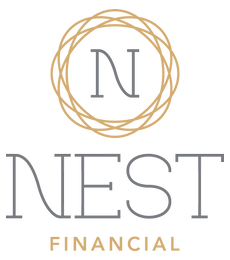Every year we take the first Monday of September off of work. Many people use this day to celebrate the end of summer, basking in the final hours of their favorite season before sending her off into the sunset (which is starting earlier and earlier each day). But of course, Labor Day is the official reason behind this three-day weekend, and as the name suggests, this holiday honors the many working Americans who contribute their time, skills, and expertise to build and sustain our country’s economy.
The History of Labor Day
Labor Day also recognizes the achievements that workers have made in securing workplace rights for all. In the late 1800s, it was not uncommon for laborers to work 12 hours a day, 7 days a week. There were no minimum age requirements for employees, so many children were sent to work as well. Poor and recently immigrated Americans suffered unsafe and unhealthy working conditions on top of a strenuous schedule.
Ultimately workers banded together to fight these injustices, beginning to rally, strike, and advocate for better pay, more humane schedules, and safer conditions. These efforts culminated in the first Labor Day Parade in NYC on September 5th, 1882 – the first Monday of the month – when thousands of workers took unpaid time off to march for their rights.
As workers stood their ground and continued demanding rights, employers started to meet their demands. These efforts continued and strides were made in workplace justice. Ultimately Labor Day was recognized as an official holiday in 1894 to commemorate the efforts behind the workers’ movement.
Labor Day reminds us that part of honoring employees includes treating them with respect. While the workplace looks a lot different now than it did in the late 1800s, there are still many things that employers can do to communicate their appreciation and respect for their employees.
The NEST Team is composed of entrepreneurs and many of our clients are business owners as well. Just as we are integral members of Austin’s entrepreneurial ecosystem, our employees are also part of our vibrant community. In honor of Labor Day, we thought we’d share information about communicating employee appreciation and respect year-round.
Employee Retention
Currently the US is experiencing a labor shortage, which, like most things that have happened since early 2020, is largely related to COVID-19. According to the recently-passed CARES Act, which is meant to support economic relief in the wake of the pandemic, the IRS is offering businesses credit for each employee that is retained this year. There are other incentives to retaining employees as well, including building company culture and preserving training resources.

One way to invest in your employees, increase their workplace satisfaction, and keep them around for the long-term is by offering employee benefits. Employer-sponsored health, vision, dental, and life insurance programs are common and valuable workplace benefits. Other standard benefits include retirement accounts and healthcare spending or reimbursement accounts. These are all incredible offerings that greatly increase your employees’ quality of life, but recently there has been a trend in the workplace that suggests there are other things that employees value in addition to these options.
Work-Life Balance
Working 9AM – 5 PM, Monday through Friday is a relatively recent innovation, established during a time when families were structured to have one adult spend their time at home and one adult spend their time at work as the “breadwinner.” But, society has progressed quickly and we don’t have to dive into studies and statistics to acknowledge that this model is archaic, and no longer reflects the modern family structure or lives of individual employees.
Many employees have serious commitments in addition to the demands of their work life, from caring for children or elderly loved ones, to attending classes and furthering their education, to building their own personal enterprises.

Offering your employees a working arrangement that suits their needs and a flexible schedule that enables them to manage these external commitments is very meaningful. Once they have a workplace that accommodates their particular schedule needs, this flexibility and understanding incentivizes them to stay on long-term. These employees will also be less stressed and thus more focused and productive at work. Some examples of unique working arrangements include full or part-time remote work, flextime, compressed workweeks, part-time work, job sharing, job reassignment, or even job redesign.
Employers who work with people that have unconventional schedules can also use this to their advantage. In addition to increasing productivity and retention rates, employers are able to get creative in how that they structure their standards for performance, hire part-time employees, and gain support at unconventional hours.
Fringe Benefits
Beyond wages, insurance, and a flexible schedule and working arrangement, some other benefits that can improve your employees’ experience include:
- Child care or elder care referrals and / or reimbursement
- Tuition assistance
- Paid time off
- Back-up child care
- Paid maternity and paternity leave
- Wellness programs
- Discounts on movie tickets, gym memberships, and other extracurriculars
- Employee assistance programs (EAPs)
These are considered “fringe benefits”, and other examples include: a pet-friendly workplace, free meals or products, yoga classes, games, and other recreation on-site, commuter benefits, employee stock options, and bonuses. There are tax benefits associated with some of these fringe benefits as well.
As our priorities shift in 2021, studies reveal that employees also value when their employers make an effort to educate their teams about financial wellness and help them restore financial health that was jeopardized during the pandemic by providing emergency savings programs or student loan repayment assistance, for example. Many remote employees have also expressed appreciation when their employers bolster their home setup with technology and productivity apps, so that their remote work experience is comfortable and efficient.
Think Outside the Box
Some of these benefits are inexpensive and others are more costly, but given the potential return on your investment in the form of increased productivity, employee retention, and a positive company culture, investing in a mix of programs tailored to the needs of your workforce can give your business an edge. 
There will continue to be evolutions in the workforce, with a 4-day workweek and an increase in minimum wage a couple potential reforms on the horizon. In the interim, it’s always in an employer’s best interest to communicate appreciation and respect for their employees beyond a wage or salary.
If you’re a business owner in Austin or beyond and you’re interested in exploring creative options for your company, please reach out at info@nestfinancial.net. As entrepreneurs ourselves, we love to work with big-thinkers and help build, develop, and sustain your passion – and a solid financial plan is a great first step.
DISCLAIMER: We are here to inform you with real, non-bias financial planning education. We are legally obligated to remind you that the information and opinions shared in this post are for educational (and entertainment) purposes only, and are not investment or financial planning advice. For guidance about your unique goals, reach out at info@nestfinancial.net.
Find us on:






[…] probably heard of “Sell in May and Go Away‘, a piece of archaic investing advice that suggests investors sell their stocks in May and […]